
Multiple South American llamas standing on hillside Photo credit: Gerry Feehan
Mendoza, Argentina
Chile’s Ruta 60 starts peacefully, wending slowly out of Santiago through a succession of fertile valleys. Then the Andes abruptly intrude and things get serious. From the low foothills the road quickly escalates into a series of tight, treacherous switchbacks. Our front-row perch offered an Imax-like view of the ribbon of looping asphalt stretching into a thin line above and below.
I have suffered from elevation sickness in the past and had no intention of reliving the experience in South America. So, popping into a streetside pharmacia in Santiago earlier that morning, I gesticulated in Spanish until the confused clerk handed over a few tabs of Diamox—which I quickly quaffed for our over-the-Andes bus ride. The bus zig-zagged upward until Aconcagua, the highest peak in the southern hemisphere, came abruptly and stunningly into view. Then, just as my head began to ache and breathing became laboured, we summited the 4000m pass and began the descent into Argentina.
These express double-decker buses are wonderfully comfortable. But for some reason—stuff sloshing around in the commode perhaps?—the onboard banos was off limits. We de-bused at the border, bladders bursting. Upon examination of the ‘restroom’ we all agreed to run the risk of peeing our pants rather than utilize the dubious facilities. Then the Argentine border guard, mirroring the attitude of custom officials round the globe, went to work. His assignment: make an innocent tourist sweat profusely and needlessly while he performs a meaningless bureaucratic task at a pace designed to embarrass a sloth.
On the slow descent into Mendoza we passed the barren runs of two ski resorts, rusty chairlifts swaying uneasily in the ferocious wind. It was early spring but there was no hint of snow—not even runoff. In a few treacherous corners along the roadway, truckers had created a series of makeshift shrines, carefully assembling stacks of water bottles, offerings to a mythical nun who, attempting to convert the souls of indigenous locals a century ago, died from thirst in the parched desert.
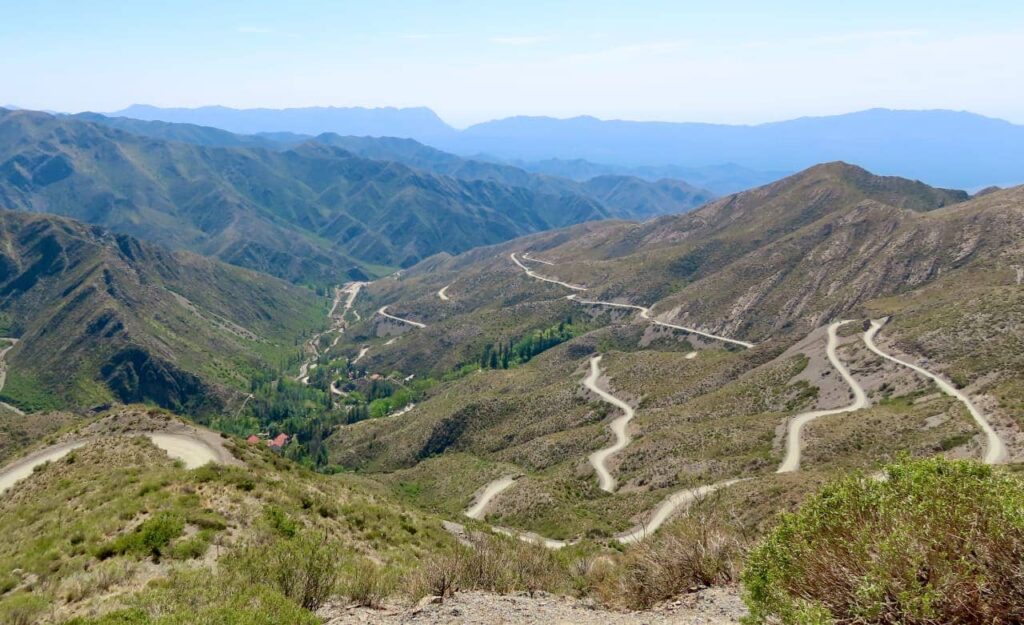
Mafalda met us at the bus station. Her parents named her after a famous 1960’s Argentine cartoon character. (Although the comic strip is long gone, the cartoon’s image remains plastered across Argentina, adorning T-shirts and coffee cups from Buenos Aires to Ushuaia.) In the morning our real-life Mafalda, a stunning woman in her mid-thirties, took us on an all-day wine tour and explained how things worked at the bodegas. Mendoza is remarkably arid. Flat desert bordering the Pampa. A reservoir and canal system originating high in the Andes supplies the mineral-rich water that nourishes the vineyards, producing Malbec, one of the world’s most celebrated wines. Water is everything. Without irrigation these remarkable grapes would shrivel on the vine.
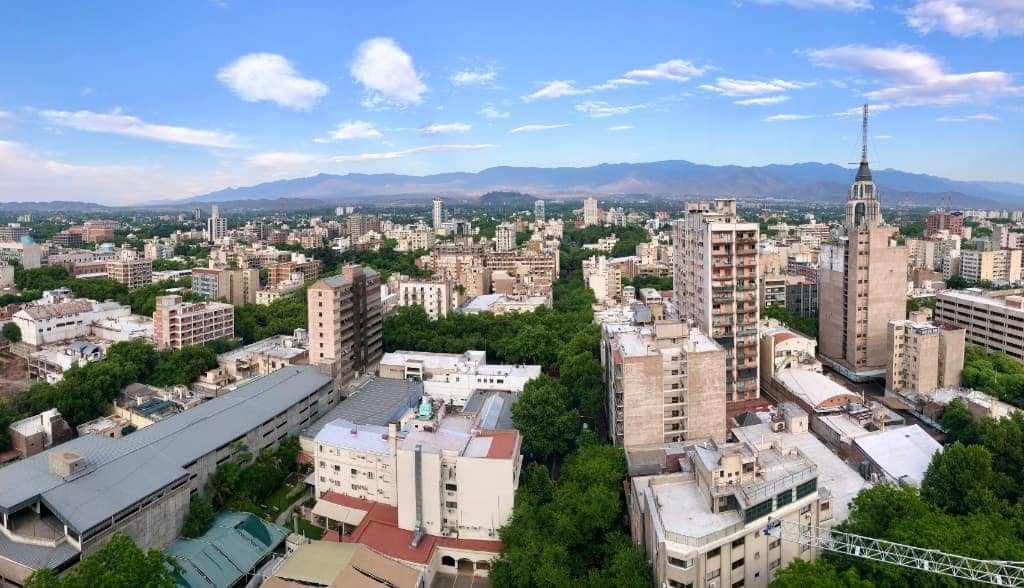
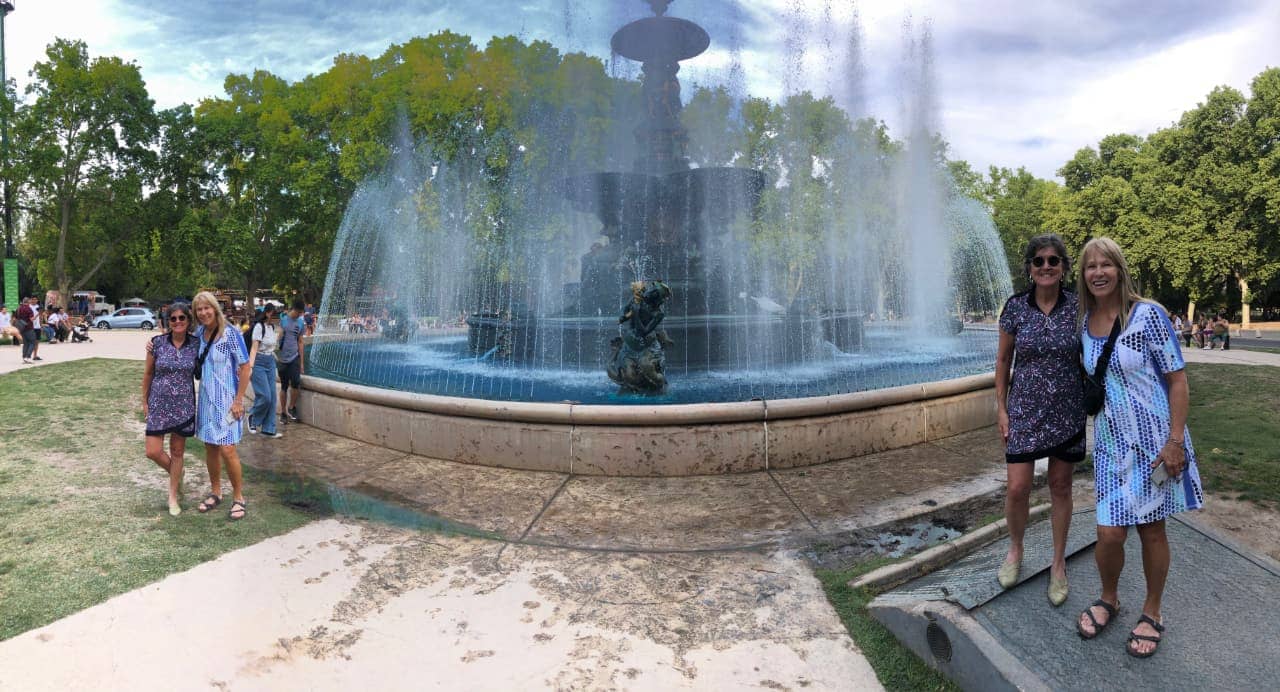

Mafalda proudly lauded the beauty of Mendoza, the wine, gastronomy and lifestyle. She wasn’t shy. Between bites of braised lamb and sips of vino tinto, she confided, ‘Sure I’ve had a few boyfriends but nothing serious.’ Her family is in Buenos Aires. Dad is a taxi driver. Mom a teacher. Divorced. Her two brothers are lawyers, but they don’t talk. Her latest suitor is a dentist from Brazil. ‘I’m waiting for him to prove himself,’ she declared determinedly, then raised her glass and offered a sincere, ‘Salut!’ We sat back, listened, sipped, enjoyed the afternoon sun—and a rather large piece of carne to go with the mutton. We sampled the vintages of three wine cellars that afternoon… maybe four, I really don’t recall.
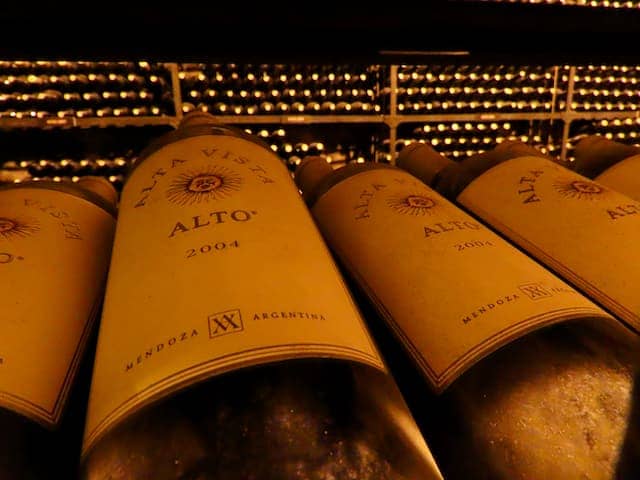
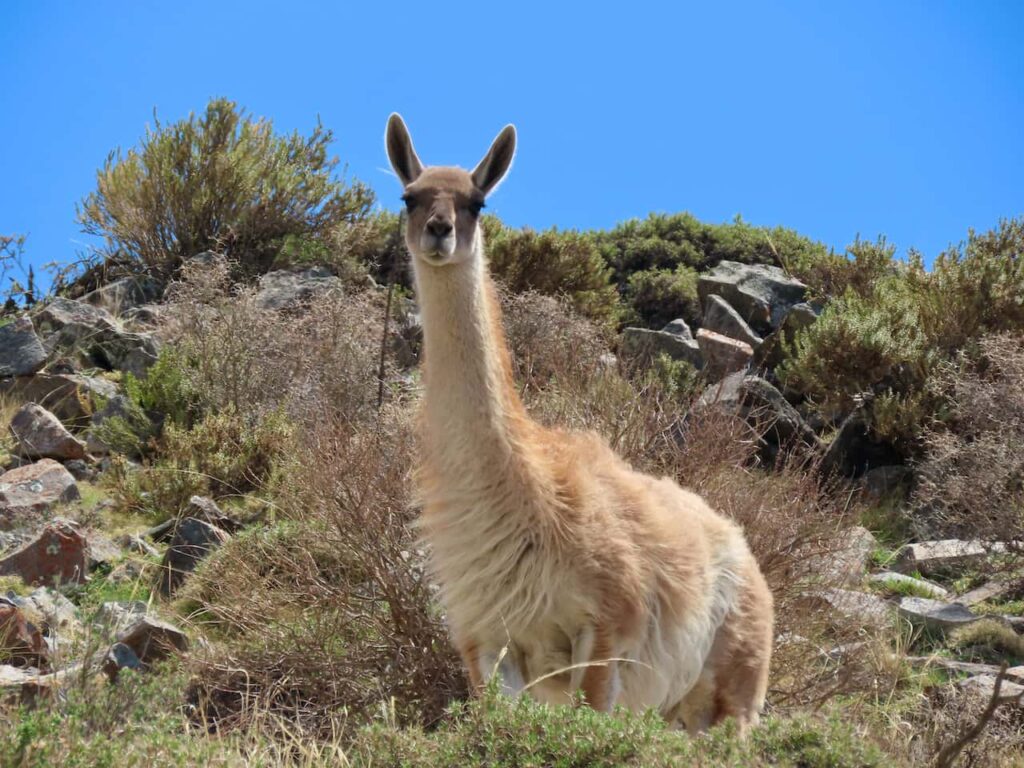
In 1817, an Argentine army led by Jose de San Martin ‘the Liberator’ was searching for a route through the Andes to support Chile in its struggle for independence from Spain. The army stopped to reconnoiter at Mendoza. General San Martin dictated that the troops would split into two cadres, one taking the southern route through to Santiago (the one we had successfully navigated by bus a couple days earlier), the other half tackling the untried Los Patos pass. A third of the army died crossing the Andean Cordillera.

This is where Mafalda took us for a serene day of hiking on our last day in Mendoza. The silver mountains shimmering in the placid spring sun made the image of 19th century war, deprivation and death seem remote and unimaginable. At a viewpoint an hour into the trail, Mafalda pointed down to a charming resort in the valley below. The magnificent Villavincencio hotel was built by an eccentric European in the 1940’s, intended as a gateway to the Andes but the lodge was shuttered down soon after when a proposed year-round road through this rugged terrain was abandoned. Today the historic building functions as an amusement park. The old pool, clinging to past glories—and some algae—still shimmers under the La Plata (Silver) mountains.
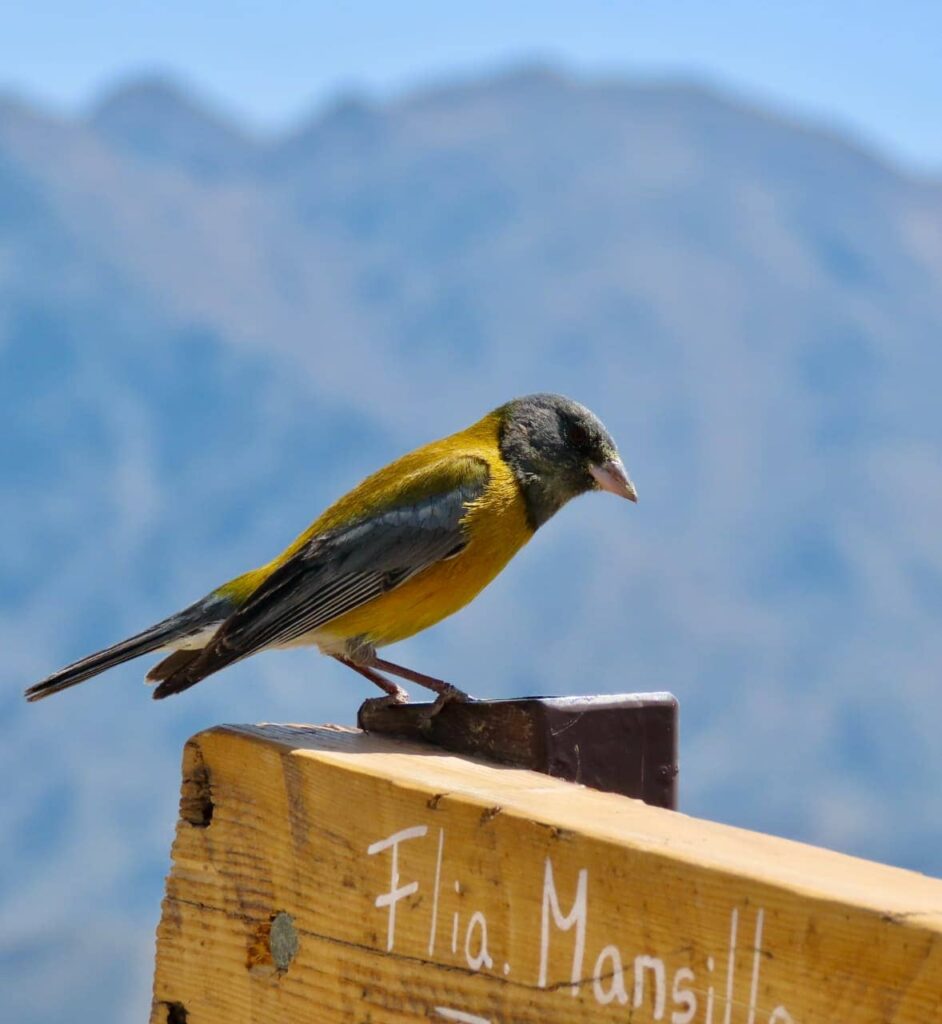
Ancient conflicts and forsaken architecture were all fine but we were here to see some native fauna. Mafalda had promised us there’d be guanacos. These shy, aloof creatures roam freely and are protected in this high arid region. We trudged on for another hour and, just as we began to question her veracity, a plaintive sound swept down with the cold howling wind. The noise was reminiscent of a petulant child or a distressed colt. Mafalda pointed to a silhouette above us: a solitary guanaco, a male. Argentinians call these fellows ‘relinchas’. And as our eyes adjusted to the camouflaged hillside, 10 more animals appeared, all females, feeding below. His harem. The relincha guarded them from high with undivided attention, wary of other males who might challenge his dominance and abscond with his flock. A pair of massive Andean condors swooped into view, talons bared. The guanacos watched apprehensively. The humans took cover. Things are tough in the animal world.
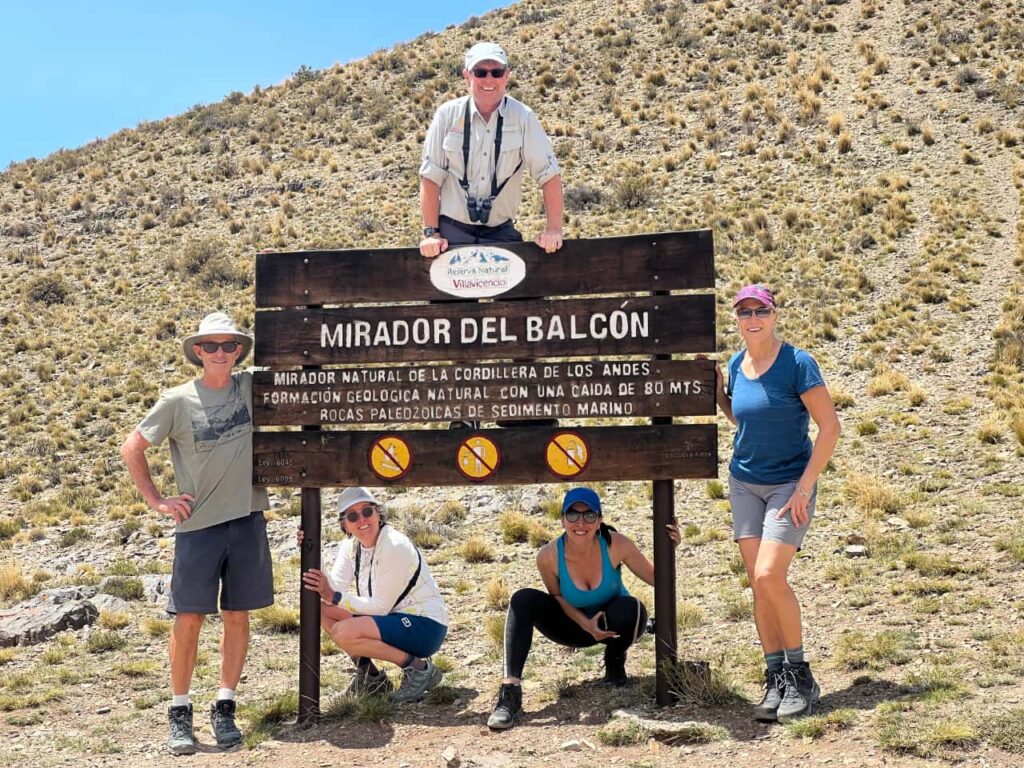
Guanacos are related to llamas but with its larger frame, orange coat and white upstanding tail the guanaco seems fiercer, prouder and, frankly, a little smarter than some of its camelid brethren. The hike ended at Mirador del Balcon, where an extinct waterway plummets into an eroded canyon. Mafalda became pensive. At the wooden lookout above the dry cascada she quietly began to sing. Her halting soprano slowly filled the gorge. Layers of ancient silver, green and iron-hued rock listened and reverberated. In the morning at the airport we said our goodbyes. Mafalda was crying. Some others too. Argentinians are an emotional lot.
Gerry

Gerry Feehan says
Sounds good Brett... and please do share. Got more Patagonia stuff coming in the pipe!
Brett Bryan says
Hey Jerry, im glad to see you back in your exploring mode, the mirrored photo by the fountain was well done.
We look forward to seeing you and Florence at the Kimbo slope this winter.
I'm passing this story on to my friend Aby who is heading to Patagonia Pronto.
Claudette McCartney says
Thank you Gerry (& Florence) for sharing all your cultural experiences and world wonders with us from your travels. We appreciate all the information. It has me looking destination, and animals I would not do otherwise.
"Wherever you go, go with all your heart." Confucious
Terry Houston says
Greetings to the two of you. Gerry another good (great) story.
Thank you very much. Waiting for the next one....
bob miller says
It's been a while Gerry.
Glad to see that you are allright & back at it.
Lucille Landry says
So happy you’re back at it again Gerry. Looking forward to hearing about more of yours and Florence’s adventures around the globe!
Russ Quinn says
Hi Gerry,
So nice to receive your travel writing again. Your piece on Argentina and Mendoza reminds Barb and I of our time there when we went to watch our daughter play field hockey for Canada in the Junior World Cup in 2000. Afterwards we went to an estancia at the foot of the Andes where we rode horses for two days.
You really have a way with words. Thanks for sharing.
Please give our regards to Florence.
By the way we spent 6 weeks back in NZ and 3 weeks in Tasmania in February and March - many highlights, too numerous to recite.
Katherine Holmes says
Thanks Gerry!
I love reading about Florence and your adventures. I loved Argentina and Chile when we were there many moons ago.